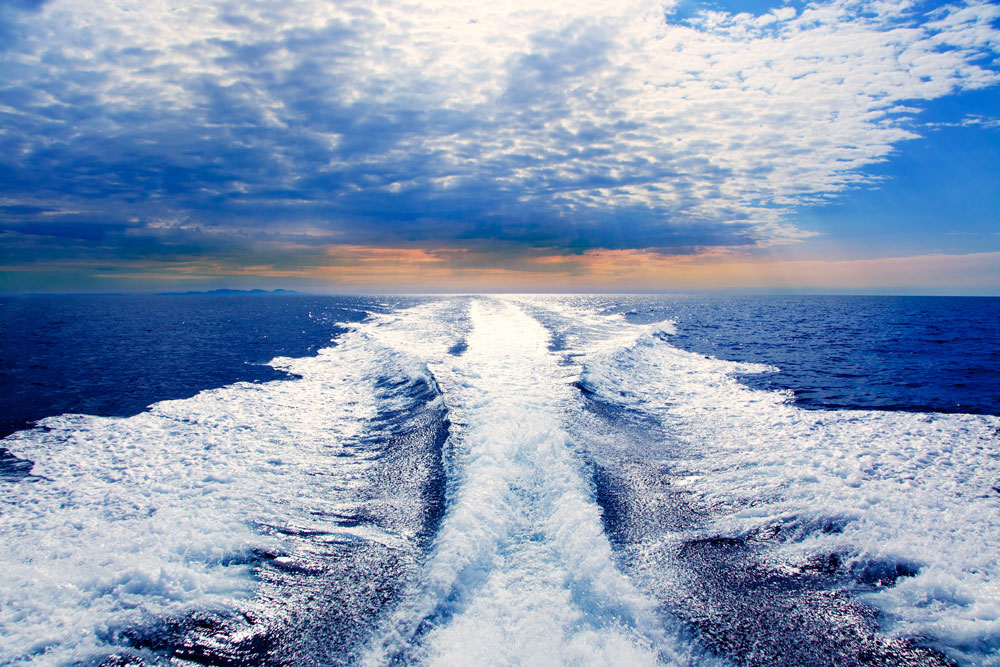

Interview with
Ione Astondoa, Operational Director of Astondoa
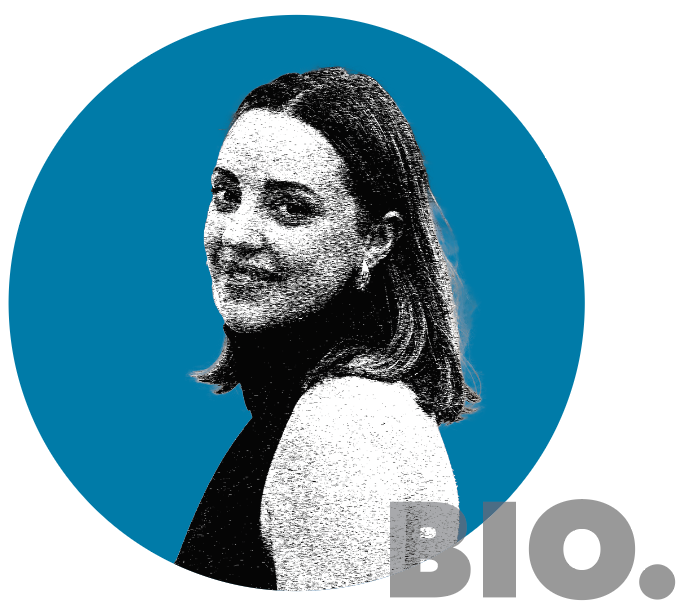
Ione Astondoa is part of the fourth generation of the Astondoa family. The family has been engaged in the construction of pleasure boats for over one hundred years, following the company’s creation in Alicante, Spain, in 1916.
Ione has a Masters Degree in Digital Marketing, E-Commerce and Social Media, as well as a Double Degree in Tourism and Business Administration from the University of Alicante. She speaks Spanish, English, German and Valencian.
Ione joined the yard’s management team as Marketing and Communications Manager, a position she combined with Cost and Production and HR Management. She subsequently became Director of Operations at Astondoa Shipyard. Since joining the company, she has led the renewal of the marketing strategy with very satisfactory results.
Ione is the daughter of Jesús Astondoa, CEO of Astondoa. She and the family are committed to supporting charitable causes, to which Ione dedicates a part of her free time.
At Astondoa, everything, or almost everything, is produced in-house, from the designs, the engineering, the molds, the laminates in composite materials, to the machining and stainless steel parts. Our goal has always been to successfully maintain the accessibility of a family-run business with the highest standards of build. For example, excellence in carpentry work continues to be one of the hallmarks of our brand.
Astondoa has 108 years of history, and our goal is to consolidate our position as a leading shipyard in the manufacture of luxury boats without losing one iota of what distinguishes us: quality.
Since 2020, we have renewed our boat ranges and introduced new design lines. As a result, the As range is born with two models (As5 and As8) and the Coupe range, also with two models (377 Coupe and 677 Coupe).
In 2023, we launched the Ax range with the Ax8 model. And this year, we have put our efforts into adapting and shaping ourselves according to the market.
We have decided to emphasize the Balearic territory, opening our first office in Puerto Portals, Palma de Mallorca. We wanted to create an ‘Atelier Astondoa’, a real boutique, where we can serve our sailing customers in the region and approach potential customers who are in the Balearic Islands.
For 2025, we are working on the design of new models, mainly of medium length, where Astondoa has a strong name.
In addition, we are working on the design and conception of another model that will be part of the sports range, which is also scheduled to be launched in 2025. Our idea, and what occupies us at the moment in design, is the development and consolidation of these ranges, although we also like to surprise the market, so I cannot say much more!
Of course we cannot speak about new models without mentioning sustainability. The yachting industry is committed to the European objectives on decarbonization.
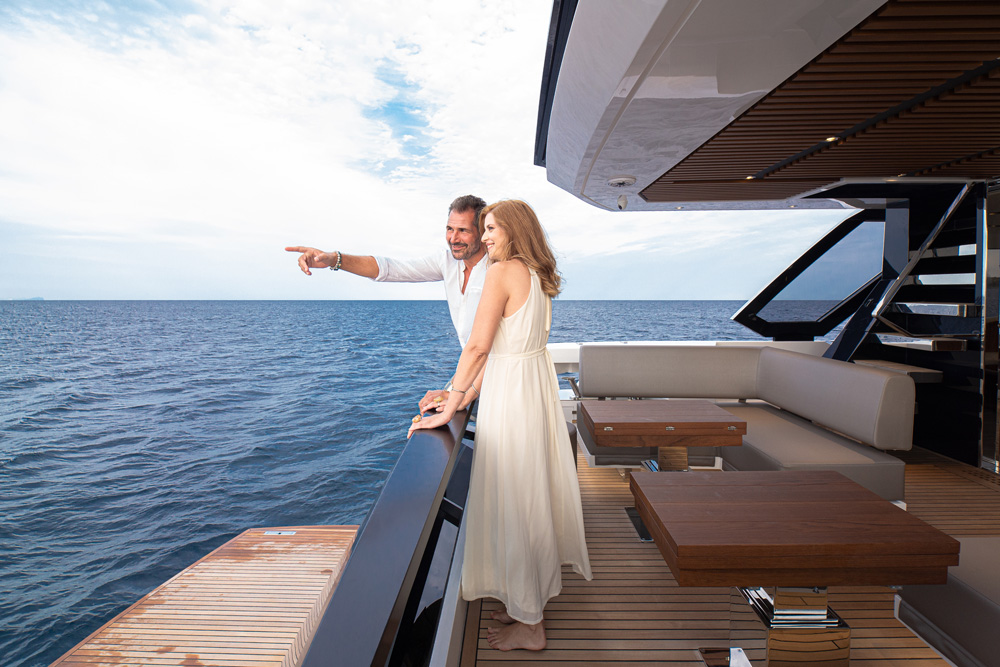
At Astondoa, we are constantly evolving and investing in facilities and equipment, while customers are increasingly demanding a sustainable sailing experience with more environmentally-friendly performance. I would highlight five points about sustainability:
1. Design: the basis of sustainable yacht construction is eco-design. Every aspect, from the selection of materials to the construction process, is carefully considered to minimize environmental impact. This includes the use of renewable, recyclable materials and clean energy technologies, such as solar panels and electric propulsion systems.
2. Innovation in materials: advances in composite materials are redefining the standards of quality and sustainability in luxury yacht construction. Alternatives such as carbon fiber and bio-compatible materials are lighter, more durable and have a lower environmental impact.
3. Use of sustainable woods: opting for woods certified by organizations such as the Forest Stewardship Council (FSC) ensures that they come from sustainably managed forests. These woods are not only beautiful, suitable and durable, but also contribute to the conservation of forest resources.
4. Energy efficiency: the integration of smart technologies and energy management systems maximizes performance while minimizing environmental impact. Energy efficiency is fundamental to sustainable yachts.
5. Propulsion innovation: last but not least, the search for more efficient propulsion is crucial. From hybrid systems to hull design, measures are implemented to reduce energy consumption and emissions.
Our relationship with RINA in these areas is key. RINA is fully up to date on all the technical advances which it immediately incorporates into its regulations, ensuring the latest technology on our boats. Staff at RINA facilitate the development of the projects. And as a leader in this segment, RINA is able to provide us with a top-quality service entirely tailored to our requirements. We have been working together for more than 20 years.
More generally, regulation and the simplification of regulations relating to the yachting industry will make the market expand and grow.
Here in Spain, we anticipate continued growth. Although the market for smaller length yachts has been somewhat impacted by inflationary factors, we expect this to change, while for the larger lengths the impact has been relatively small.
The pandemic introduced the pleasure of sailing to many more people, and the boating and yachting industry brought in a new group of younger consumers who will continue to embrace this activity.
Two important elements will help draw more young people to the industry. first, we are working to attract new talent and improve training. This way, new generations will be better prepared to take on new roles; and, secondly, sustainability will be key. The integration of sustainability into the corporate culture will be a crucial factor in attracting a new generation to this wonderful industry.

Interview with
Fulvio De Simoni,
CEO of Fulvio de Simoni Yacht Design

Fulvio De Simoni is one of the best-known designers of pleasure boats in activity. Fulvio was born in the Cinque Terre region of Italy and after completing his studies began his career as a designer in Milan.
In 1983, he founded Italprojects. Throughout his long career he has collaborated with prestigious shipyards such as: Pershing, Rossinavi, Austin Parker, Palumbo Superyacht, Filippetti Yacht, Antonini Navi, Mochi Craft, Ilver, Antago, Raffaelli in Italy, Gallart and Astondoa in Spain, Ocea and Simonneau in France, Trojan in the US, Inace and Tarpon in Brazil, and many, many others. In 2016, Fulvio founded a new company, Fulvio de Simoni Yacht Design, together with long-time collaborators Cristiano Tonarelli and Enrico Lotti, with whom he continues to work on new projects for yachts and pleasure boats ranging from 14 to 80 meters.
In his projects, Fulvio has always sought to create innovative and different designs through original choices. His nonconformist attitude is clearly reflected in his designs.

T
hese days the main shipyards have developed a production of boats so varied and extensive that they cover every type of customer need.
That said, boat owners have become much more attentive to the operational economy of the boats, particularly to fuel consumption, which, due to its high cost, represents an important expense.
This trend has led to the design of less sporty and more efficient boats at low speeds, and more voluminous ones that offer great habitability without sacrificing large spaces for outdoor living.
Great attention is also being paid to on-board comfort, particularly to the reduction of rolling, and the lessening of noise and vibration, especially when the boat is stationary.
Hybrid propulsion, along with the increasing efficiency of modern batteries, represents a valid solution today for optimizing consumption and for having a few hours of autonomy in quiet mode, therefore without the use of generators which, although well-insulated, still cause discomfort to guests.
Environmental issues are also changing design processes, of course.
Hybrid propulsion, energy storage systems, solar panels, and other technologies available today for reducing environmental impact result in an increase in technical spaces and weights.

A few weeks ago, the Sea Cat, a 42-meter motor catamaran with a sophisticated energy management system, was launched.
Thanks to the efficiency of its hull, the availability of batteries, and the large surfaces available for the installation of solar panels, it guarantees great navigation autonomy in fully electric mode.
In this specific case, the distribution of weight on board was also carefully managed to allow for highly efficient hulls.
Several years ago, we designed the Wider 150, a ship with diesel-electric propulsion. This technological solution allowed us to place the engine room in the bow area, freeing up the space usually occupied by the engines.
This space was replaced with a large covered pool that could accommodate a 10-meter tender, which could enter from the stern while floating.
Going forward, I believe that the boating industry will follow what is happening in the automotive sector, where car manufacturers are making huge investments in research and development.
Without a doubt, progress in battery efficiency and safety will be crucial, as they will represent the role currently fulfilled by fuel tanks and will serve as an additional energy reserve in the future.
In the meantime, there will continue to be a drive to larger size yachts. There are many potential owners worldwide for these boats, especially in countries whose economies are experiencing rapid growth, and I am inclined to think that the mega yacht sector will continue to expand.
In particular, the demand for large ships is increasing in Asia.
The future of medium-sized boats is more uncertain, as their popularity is more closely tied to economic fluctuations.
The role of the classification society in the yachting industry is more assured. I have observed how the societies have evolved, and are now serving not only as regulatory references but also providing consultancy functions.
The rapidly evolving boating world requires agility in updating and interpreting regulations.
In this context, the consultancy role of the classification society is crucial for our work.
Interview with
Gianni Paladino,
Commercial Director of Lusben

After graduating with honours in electrical engineering from the University of Genoa, Gianni Paladino launched his career as a Sales and Project Manager for various businesses and multinationals, including Siemens, Bombardier and Wärtsilä Italy.
At the start of 2023, Gianni joined Lusben as Commercial Director, building on experience gained in his previous positions in the commercial offices of major international industrial groups.
Gianni is responsible for developing the sales structure in order to increase Lusben’s market presence. Prior to his current position at Lusben, Gianni spent nine years at Wärtsilä, becoming Director of Strategic Account Sales.
After the significant spike in new yacht registrations observed in recent years, we are expecting a stabilization in the growth curve in the short term. This stabilization will likely result in a more consistent market growth, rather than the previously observed peaks in new yacht entries.
Looking ahead, we also foresee a longer-term trend towards an increase in the average length of yachts in operation.
To accommodate the increase in both the number of cruising yachts and average sizes, there will be a growing demand for more refit and repair capacity from yards such as ourselves.

And, of course, the growth in the fleet will also have an impact on the industry’s carbon footprint.
At the same time, shipping and yachting is looking to decrease its overall CO2 emissions, which will require the decarbonization of existing yachts, as well as new builds.
Refit yards are contributing to this effort, and one of the main solutions to achieving this ambitious decarbonization goal is to focus on the refit of yachts’ engine rooms.
In collaboration with the industry’s main engine makers, we are actively promoting hybrid solutions rather than alternative new “low impact” solutions.
Our comprehensive approach also includes optimizing the overall energy consumption and enhancing hull efficiency, resulting in a significant reduction in the total installed power.
At Lusben, we are determined to foster a sustainable and environmentally friendly culture in different ways.
We play an active role within ICOMIA’s (the International Council of Marine Industry Associations) green committee, which is contributing to the establishment of future sustainability standards for refit facilities.
Furthermore, we are dedicated to minimizing our environmental footprint through substantial infrastructure investments.
This includes the implementation of an advanced black water collection system and the enhancement of electrical distribution and heating system efficiencies.
Finally, in collaboration with our strategic business partners and suppliers, we continue to promote the integration of innovative, eco-friendly technologies in the refit process.
Digitalization, which has become core to the operation of modern yachts, also plays a part in sustainability, by significantly enhancing the performance and operational efficiency of any yacht.
The adoption of cutting-edge technologies is essential to reduce energy consumption, thereby improving the overall efficiency and sustainability of the yacht.
Meanwhile, by integrating advanced technologies such as predictive maintenance systems, it will be possible to substantially lower overall operational costs.
In tandem with these developments, we are accompanied by RINA, which is offering the latest expert advice in yacht design and operation.
As we look to the future, it will be crucial to further enhance this collaboration, particularly for major refit projects involving significant transformations such as extensions, aft upgrades, or other structural changes.
The active participation of the classification society in these projects will be a critical success factor for our shipyard.
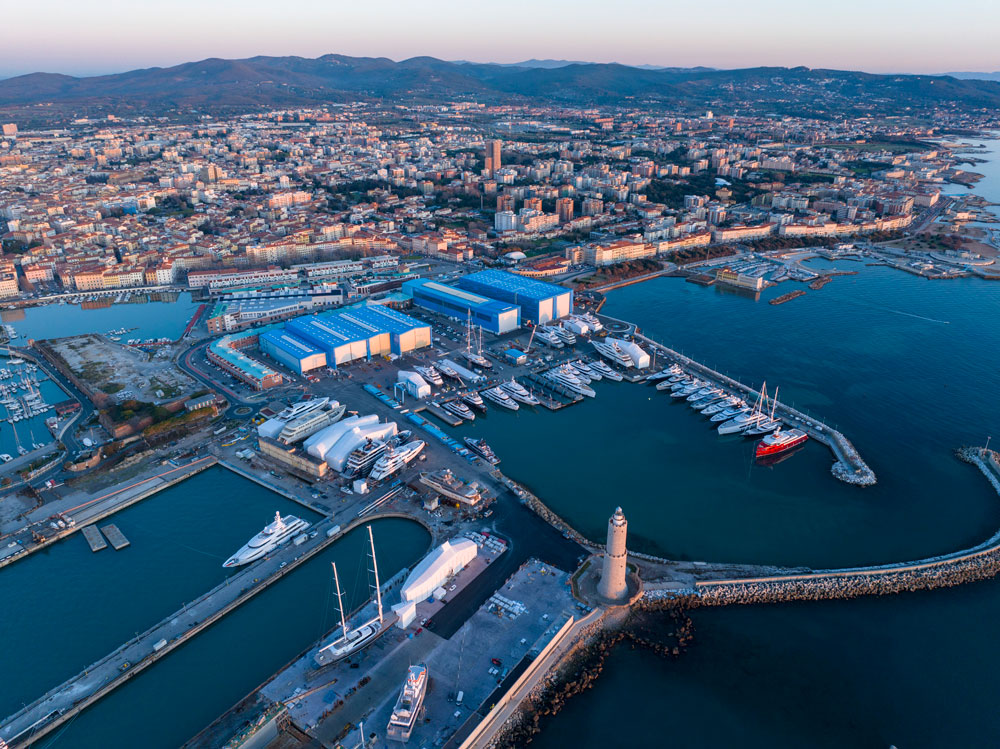
Interview with
Ramazan Mengi,
Shipyard Refit Representative of Mengi Yay
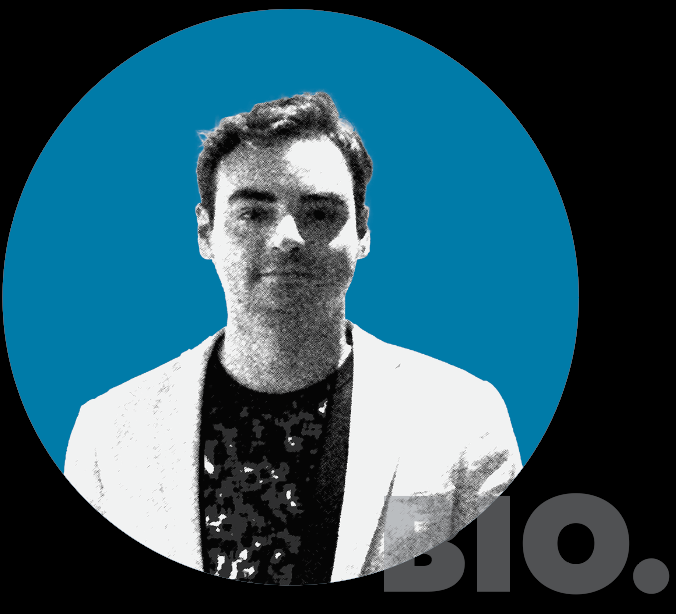
Ramazan Mengi is a member of the third generation of the Mengi family, which has been building prestigious yachts in Turkey under the Mengi Yay brand for more than sixty years. Ramazan studied Naval Architecture and Marine Engineering at Newcastle University in the UK, when he also completed internships with GINTON Naval Architecture in the Netherlands and Italian designer VYD Studio. He subsequently earned a Master of Science in Artificial Intelligence from the University of Michigan. Following his graduation, Ramazan returned to Turkey to join Mengi Yay Yachts, becoming a Project Engineer. He is also closely involved in business development and, as Technical Business Development Executive, has led the development of multiple superyacht projects. In 2024, Ramazan founded Reviva Refit under Mengi Yay Shipyard. As co-manager, he has successfully positioned the company as a leader in the refit market. Ramazan’s diverse educational background has equipped him with a unique skill set, blending traditional shipbuilding techniques with modern AI technologies.
L e a r n m o r e a b o u t : In recent years, Turkish shipyards have begun attracting clients and brokers who, due to previous misconceptions about quality and governmental issues, might have been hesitant 5-10 years ago.
However, as clients become more knowledgeable and involved in the building process, they recognize that constructing full or semi-custom yachts in Turkey offers unparalleled quality.
This superiority is evident in terms of flexibility in equipment selection, engineering, and the customization of interior and exterior designs, alongside innovation. Despite a decline in inquiries post-2023 - where we celebrated eight launches - such fluctuations were anticipated and are not expected to last. Today, around a quarter of our new-build inquiries originate from the US, with the remainder spanning globally.
What truly distinguishes Turkey in the maritime domain is the timeliness and precision of project completion - guaranteed within a maximum of two years and often exceeding expectations.
This punctuality, coupled with an innate flexibility to adapt and cater to diverse client needs, reflects the agility embedded in our DNA. Time is everything, and when we say the project will be completed in 1-2 years maximum, it will be. I think this is what makes Turkey very special.
Flexibility and the ability to make changes in order to adapt to different clients is in our bones, and this gives us strength!
Going forward, the horizon is limitless, with technological exploration and innovation, particularly in propulsion and house load systems like hydrogen, propane, and full-electric solutions, still to be fully explored.
Sustainability must be more than just marketing and yards must innovate above and beyond the regulations, which remain somewhat lax compared to what is required. We hope these will be tightened in the years to come.
Combining real-world experience with A.I.
Another area where we believe we are ahead of the curve is in Artificial Intelligence (A.I.). I have a personal interest in this as, in addition to studying Naval Architecture and Marine Engineering, I also completed a Master’s Degree in Artificial Intelligence at the University of Michigan.
Today, digitalization and new technologies are being implemented in all industries and sectors. The question is: when and how to implement such technology? The A.I. field is vast, and growing exponentially.
The key area open to new technology in yacht building is the design and all its facets: naval architecture, exterior and interior design, and structural design – all with equipment selection in harmony.
How these new A.I. models can be implemented is still up for debate. However, it is clear to see that they can be used during the build process, for example, with agent-based strategic models for time management, project scheduling, procurement, budget management and decision making. It is also inexpensive to develop and install infrastructure for autonomous yachts. This includes the use of the laser-based technology LIDAR, which can be integrated into NAVCOM equipment (transducers, RADARs, cameras and AMS) to give a 3D map of your surroundings.
This can be used to train autonomous yacht cruising computer vision models, such as obstacle detection, human detection, route correction for obstacles, marina parking, security surveillance, face recognition, keyless entry and many other elements that otherwise can only be detected by RADARs.
In terms of digitalization, the AMS user interface, and more integrations and client and crew CRMs, are great way to adapt the builder, client and crew to the building process, as well as to after sales processes.
In the meantime, we are focusing on our new projects under construction.
